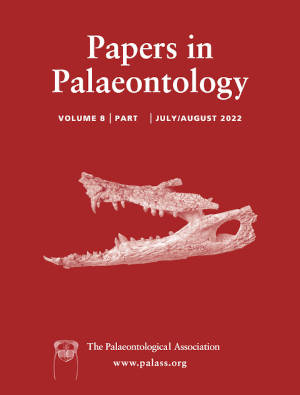Article: New barklice (Psocodea, Trogiomorpha) from Lower Cretaceous Spanish amber
Publication: Papers in Palaeontology
Volume:
8
Part:
3
Publication Date:
2022
Article number:
e1436
Author(s):
Sergio Álvarez-Parra, Enrique Peñalver, André Nel, and Xavier Delclòs
DOI:
10.1002/spp2.1436
Abstract
Abstract Barklice are insects belonging to the order Psocodea. They are herbivorous or detritivorous, and inhabit a wide range of environments. Their oldest fossil record dates back to the late Carboniferous, but it was not until the Cretaceous that they became much more diverse. However, their fossil record could be affected by taphonomic processes due to their tiny size and soft bodies. Here, we present new psocid specimens from five amber-bearing outcrops in Spain that are Albian in age. One of the specimens, a well-preserved psocid nymph assigned to †Archaeatropidae, lacks evidence of debris-carrying behaviour. Some of the specimens belong to the previously known species Archaeatropos alavensis Baz \& Ortuño and Preempheria antiqua Baz \& Ortuño (Trogiomorpha: Atropetae), providing new anatomical and biogeographical information. Furthermore, we describe a new species, Libanoglaris hespericus sp. nov. (†Archaeatropidae). The diagnosis for the family †Archaeatropidae is emended. The abundance of psocids in Cretaceous amber and their virtual absence in compression outcrops could be due to taphonomic bias. Considerations on the phylogenetic placement of trogiomorphan families and the relationships between †Archaeatropidae and †Empheriidae are included. Today, the least diverse psocid suborder is Trogiomorpha, but this suborder comprises the majority of the Cretaceous psocodean species described to date, possibly due to palaeobiological or evolutionary constraints. Trogiomorphans could have been relegated to marginal habitats by niche competition with psocomorphans. Debris-carrying behaviour in response to predatory pressure might not have been widely distributed, geographically or phylogenetically, in the Cretaceous psocid nymphs.
